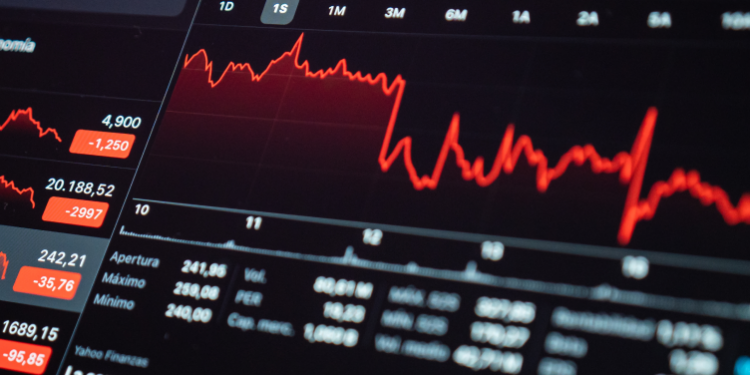Forex Risk Management
Success in forex trading depends heavily on risk management systems. The fast-moving nature of the forex market allows traders to lose their entire account within a short period when they lack proper loss control strategies. A properly organized risk management system prevents traders from making decisions on mere chance or feelings.
The Importance of Risk Management in Forex Trading
New traders make their most significant error by focusing on potential gains without paying attention to potential risks. All professional traders place risk management at the top of their priorities list. Why? Every trading strategy will fail if it lacks a mechanism to control risk and minimize losses.
Why Risk Management Is Essential
- Prevents major losses – A bad trade shouldn’t wipe out weeks or months of profits.
- Maintains emotional control – Fear and greed drive impulsive decisions, leading to unnecessary risks.
- Ensures consistent growth – Small, calculated risks add to sustainable long-term profits.
- Increases survival rate – Most traders fail because they don’t manage risk properly.
The Biggest Risks in Forex Trading
Every forex trader faces a set of risks that can impact their success. Here are the most critical ones:
- Market Risk – Market forces cause currency prices to move in unpredictable and continuous patterns.
- Leverage Risk – High levels of leverage trigger increased gains and losses since businesses need effective risk control systems.
- Liquidity Risk – Not all currency pairs have enough volume for easy entry and exit.
- Interest Rate Risk – Central bank decisions cause major shifts in forex prices.
- Political and Economic Risks – Elections, crises, and economic reports move markets unexpectedly.
How AI Helps in Forex Risk Management
The current forex market requires data analysis instead of traditional trading methods. Real-time analysis of massive market information by a trading application enables traders to detect risks that may lead to financial losses at an early stage. Risk management with OctaTrader’s AI trading app gets better due to its ability to evaluate market patterns and conduct trades at perfect times. Integrating AI technology into risk management enables traders to generate data-based choices for optimized trading and decreased emotional trading effects.
Essential Elements of a Risk Management Plan
A formal risk management system enables traders to handle forex activities with disciplined strategies instead of emotional reactions. Each reliable trading plan must contain the following elements:
Risk-to-Reward Ratio
Each trade entry requires a clear definition of risk against potential reward. The standard ratio between trading capital and potential profit stands at 1:3, where a $100 investment demands a $300 profit. The risk-to-reward ratio protects overall profitability from trade failures because even half of unsuccessful trades will not affect profitability.
Position Sizing
The essential component of risk management includes setting the appropriate amount of capital for each trade. The accepted trading guideline states that traders should only allocate 1-2% of their account balance to each position.
Stop-Loss and Take-Profit Strategies
- Stop-loss orders protect traders from excessive losses by automatically closing a trade at a predetermined price.
- Take-profit orders ensure profits are locked in before the market reverses.
Portfolio Diversification
Dependence on a single currency pair increases your risk exposure. Protection against significant losses in trading comes from using a diversified trading portfolio consisting of currency pairs with different levels of correlation between them.
Continuous Risk Assessment
Forex markets change constantly. Previous trading strategies from last month might not produce results in the current market conditions. Market conditions dictate successful traders reassess their risk management plans and make corresponding changes for optimal performance.
Psychological Aspects of Risk Management
Forex trading success depends on more than mathematical techniques and trading methods since traders demand mental strength. A well-developed risk management plan does not protect against emotional decisions that lead to rule-breaking. Both the fear of losing and greed lead traders to take actions contrary to their trading plan, either by exiting trades prematurely or taking excessive risks.
Trading psychology faces its biggest obstacle when traders must handle unsuccessful trades. After experiencing several trading losses, numerous traders either give up their strategy completely or engage in dangerous speculations to regain their losses swiftly. Discipline represents the solution by maintaining adherence to the strategic plan despite what happens in the short term.
Confidence stands as an essential component among other factors. Risk-executing traders maintain confidence in their investment analysis tools along with their safety methods which allows them to trade with complete self-assurance. Accepting financial losses as an inevitable part of trading helps traders maintain mental balance thus they can focus on sustained profitability instead of immediate profit generation.
Practical Tips for Implementing a Risk Management Plan
A detailed plan for risk management establishes the foundation required for long-term achievements in forex trading. The following steps represent the core elements for risk control implementation:
- Define Your Risk Per Trade – Limit each trade to a fixed percentage of your account balance, typically 1-2%.
- Use Stop-Loss Orders – Set a stop-loss level for every trade to cap potential losses.
- Adjust Leverage Wisely – High leverage can magnify losses. Use only what aligns with your strategy.
- Keep a Trading Journal – Track your trades, risk levels, and mistakes to improve future decisions.
- Diversify Your Trades – You should not invest capital in a single currency pair and market condition.
- Follow Market News – Economic events and political developments can impact forex prices; stay informed.
- Stick to the Plan – Discipline is key; do not let emotions dictate your trades.
The Key to Sustainable Forex Trading
When participating in currency trades, you face risks. A well-designed risk management approach will distinguish financial growth from significant losses. Through established risk boundaries, stop-loss mechanisms, leverage control strategies, and self-disciplined trading practices, traders can preserve their capital while achieving maximum returns. Real-time market analysis through AI trading apps enables better trading decisions because of their AI-powered technology. Consistency and emotional control in trading operations stand equally vital, and skill mastery is a key element for success. The forex market rewards traders with risk management tools because they survive and thrive through the years.



